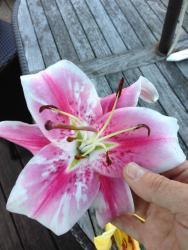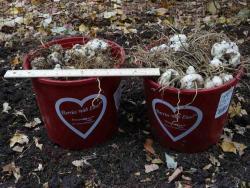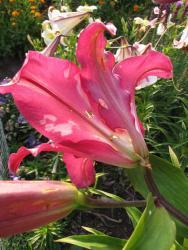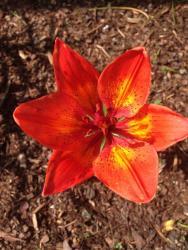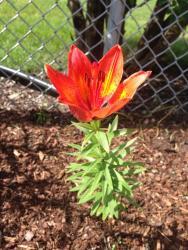Hi John: If more than one flower on this plant shows this condition AND the spots go all the way through to the reverse of the petals, then it is infected. The reason I say more than one flower is because occasionally petals can stick together as the flower opens and when they finally pull apart to open, they can leave a blemish, but that blemish WILL NOT show through on the reverse side.
If we accept as fact this plant has recently been infected, then it needs to be removed. The other Anastasia plants close to it in your group may or MAY NOT YET be infected but are highly suspect due to their proximity to this one and the fact you've been digging in there. So you need to monitor them closely next year. The age of plants is another factor to consider. The older a plant is the more time it has had to be exposed to virus's.
You have to use extreme caution when removing and handling infected plants to avoid spreading the infection yourself. Make sure all your tools, shovels, spades, forks or whatever are soaked in a pail of bleach and that your hands are washed and rinsed in alcohol after working with an infected plant and before you even touch another lily bulb. Many of us can easily get lulled into a false sense of security because you can't see a virus and we think everything is OK---but it's not. It can get on you, mainly your hands, and then you become the vector that will contaminate many more, especially during Fall planting of newly acquired bulbs, etc. When I remove an infected plant, I will not do any more lily work that particular day.

What other lilies do you have growing? Around here, I have mostly Trumpets and Aurelians with a few commercially available ones for show in a mixed garden. No Anastasia yet, though. That's usually a pretty virus resistant/tolerant plant from what I've heard.
